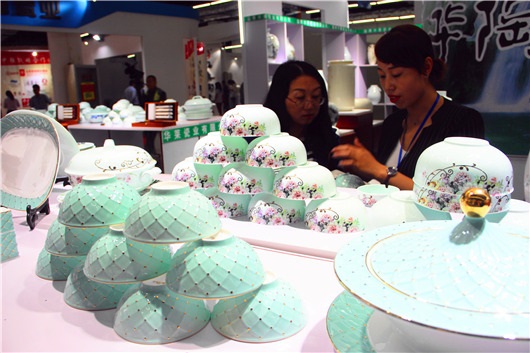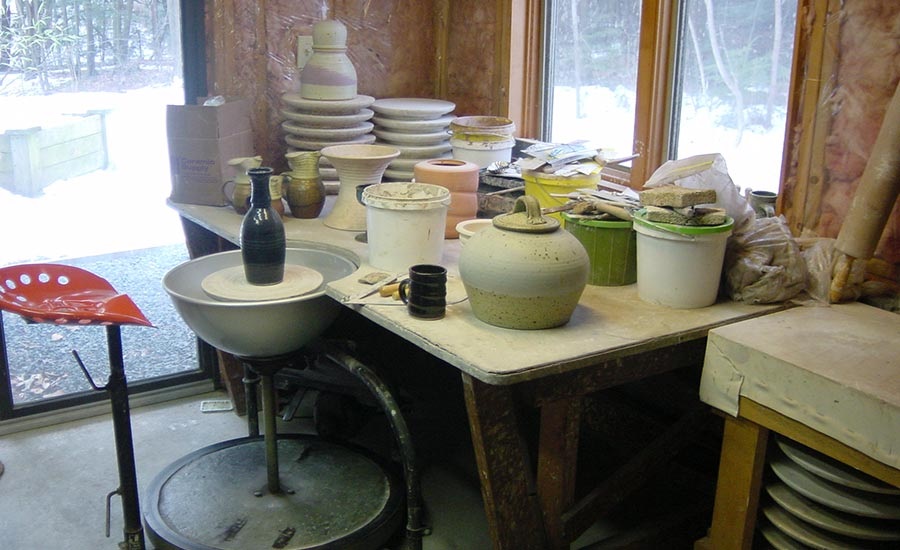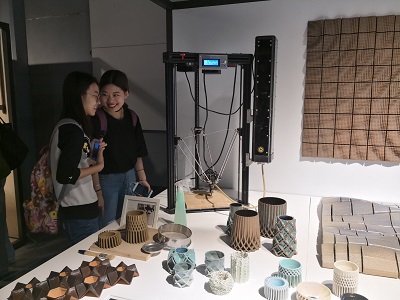Protection Strategies for Ceramics Industry
By China IPR SME Helpdesk
 陶瓷行业的保护策略
陶瓷行业的保护策略
在可支配收入增加和中国消费者增加消费意愿的背景下,陶瓷行业在中国稳步增长。 随着中国消费者对欧洲设计的欣赏,中国将出现许多对陶瓷行业的欧洲中小企业的商机。
通常情况下,欧洲中小企业会将陶瓷生产转移到中国,以降低生产成本。 这有时会使得欧洲设计的复制品从中国进口到欧盟并以较低的成本出售。随着这些进口量的增加,中国的知识产权保护和执法体系将在帮助欧洲中小企业在本国市场和中国保护其产品方面发挥更加重要的作用。全面的知识产权战略还有助于欧洲中小企业在中国充满希望的市场中取得成功。
鉴于来自中国的陶瓷产品进口竞争日益激烈以及侵权风险,公司应认真考虑在中国记录其商标和其他知识产权。中国海关在保护商标方面最有效,但对版权,专利和其他技术权利的效力通常较低。
Underpinned by rising disposable income and increased willingness of Chinese consumers to spend more, the ceramics industry is steadily growing in China. As Chinese consumers appreciate European design, there will be many business opportunities in China for European SMEs engaged in the ceramics industry.
Oftentimes, European SMEs would move their ceramics production to China to benefit from lower production costs. This has sometimes resulted in an influx of copied European-designed products being imported from China back to the European Union and sold at a lower cost. As these imports are on the increase, China’s system of intellectual property rights protection and enforcement will play a more crucial role in helping European SMEs protect their products in their home markets as well as in China. A comprehensive IP strategy also helps European SMEs to succeed in China’s promising market.
 Identify and Register IPR in Ceramics Products
Identify and Register IPR in Ceramics Products
Branding, artistic and technical elements may be embodied in a variety of ceramic products and these elements may give rise to protectable IP. As is the case in most European countries, in China most forms of IPR require registration. It is advisable to prioritise amongst products, registering the most valuable or those most widely sold and distributed.
Registration of IP rights gives the registrant legal bases to act against infringers, but failing to register IP in China may make it very difficult, if not impossible, to seek effective legal redress at a later date. Without registered IP rights, taking action may be difficult, more costly and complicated and the results less certain. One obstacle to overcome is to first identify the IP that subsists in your products.
 Design Patents
Design Patents
Design and distinctiveness are important for certain ceramics products especially those targeted at consumers including ornamental ware, tableware, sanitaryware, etc. It is thus vital to acquire rights in China to protect unique designs. In China, designs can be protected by registration under the Patent Law. Design patents protect original designs relating to the shape or pattern of an object, meaning that the outward appearance of ceramics products may be protected by a design patent. Design patents are typically granted within 9 to 12months and last for 10 years.
As design patents function under the absolute novelty rule (the design cannot have been made public in China or anywhere in the world before filing a design patent in China), it is always advisable to apply for a design patent in China as soon as the SME plans product launch.
 Trade Marks
Trade Marks
Branding is important for all companies, including the ones active in the ceramics industry as branding allows consumers to distinguish companies and develop brand loyalty. SMEs can protect their brand with trademarks. In China, a trademark can be protected by registration under the Trade Mark Law. Protection lasts for an initial period of 10 years and is renewable indefinitely for successive 10 year periods. In order for ceramic manufacturers to take legal action against counterfeiters, they must register their trademarks in China.
Foreign individuals and entities seeking to register trademarks in China must instruct a Chinese trademark agent to apply on their behalf. Alternatively, it is also possible to apply to a trademark in China via using the Madrid System. Under this system, an owner of a trademark in a member country may apply for trademark rights in Madrid member countries with a single application. If China is designated in the application, its trademark office will examine the mark under its own trademark laws. If it does not object to the application within the set time limits, the mark will be registered in China.
China operates a ‘first-to-file’ system, meaning that the law protects the person who first registers a trademark, not the person who first uses it. Thus, it is vital to register trademarks in China as soon as possible, preferably before the launch of products in China. At the same time, if a mark is already registered in China, it is susceptible to cancellation if it has not been used in China by the trademark owner for more than 3 consecutive years. Therefore, it is recommended that trademark owners use their marks in China and keep sufficient proof of the use.
 Copyright
Copyright
Copyright protects the creative or artistic expressions of an idea. Porcelain dolls, designs on tiles, vases, or mugs and the like can easily be understood and viewed as works of art, whereas bathroom sinks, toilets, clay pipes and roof tiles may (or may not depending on the level of artistic merit) be perceived as merely functional products lacking any originality. However, even the latter may contain a certain degree of creativity and may be afforded some degree of copyright protection. Copyright protection may apply to the work but would stop at its functionally-dictated aspects.
Unlike design patents and trademarks, copyright ownership automatically applies once an original work is created, and registration is not required for the work to be protected since China is a member of the Berne Convention for the Protection of Literary and Artistic Works. However, voluntary registration of copyright in China is recommended because, when a copyright dispute arises, registration acts as prima facie evidence that copyright subsists in the work and that the stated registrant owns the copyright. In practice, a registration certificate is also required in most cases where the copyright owner wishes to take administrative action against infringement.
 Identify Infringer and Enforce your Rights
Identify Infringer and Enforce your Rights
Having a representative office, agents or distributors in China is beneficial and enables SMEs to monitor infringements on the ground and filter information back. After learning of an infringement, it is normally best practice to engage a professional investigation firm to determine the extent of the problem and uncover the responsible infringer and figure out the best enforcement strategy.
Enforcement of IPR in China can be generally divided into two routes: administrative enforcement and civil enforcement (in some cases criminal proceedings are also possible, but criminal prosecution is not widely used in China). In addition, cease and desist letters, complaints during trade fairs and registration of IPR with China Customs are also options.
Administrative Enforcement
The administrative authorities in China hold enforcement powers under the various IP laws. Specifically, the Administration for Industry and Commerce (AIC) is empowered to enforce trademark rights and to handle complaints of unfair competition; the Patent Administration Bureaus (PAB) handles design patent violations and the National Copyright Administration (NCA) is empowered to enforce for copyright. Additionally, the Technology Supervision Bureau (TSB) is empowered to take action in certain circumstances where product quality is concerned, as well as in trademark counterfeiting cases.
Administrative enforcement is often considered a quick and cost-effective method to deal with straightforward infringement cases. This method involves making a complaint to the relevant administrative authorities who are designated to enforce intellectual property rights. The AIC, NCA PAB and TSB are all empowered to inspect suspected infringers and with the exception of most PABs, are empowered to seize infringing goods and impose fines. The nature of the rights infringed and the complexity of the case will determine which agency should be used in a given fact situation. A local IP lawyer can help to make this decision.
The administrative system is most commonly used for trademark infringement and unfair competition cases where the local AIC may seize infringing items and issue fines. Although the administrative route is most effective for these types of cases, larger, repeat infringers consider such actions merely as a ‘cost of doing business’ and thus are not deterred by them.
Civil Litigation
A civil action may be recommended in such abovementioned cases and in cases where the infringement is great or complicated. A company can file a civil claim against an infringer in the People’s Courts, which are empowered to order the infringer to cease the infringing act, publish an apology and compensate the claimant. Legal advice should be sought before pursuing the civil litigation option.
 Cease and Desist Letters
Cease and Desist Letters
Carefully timed and worded cease and desist (C&D) letters can be effective especially if sent to previous enforcement targets. For instance, sending a C&D letter to a previous infringer before a trade fair to remind it of any past enforcement actions, your rights, and to demand it to refrain from including any infringing products in its brochures and exhibiting any infringing products at the upcoming trade fair may be very effective. SMEs should however, keep in mind that in some circumstances a C&D letter may not be advisable if an SME is preparing for litigation and need to collect evidence of the infringement – a warning letter may alert the infringers, making evidence collection difficult.
Record IPRs with Customs
In China, customs have the power to examine both exports, as well as imports. Although Customs has the power to act ex officio on infringement, in practice unless the European SMEs record their IP rights with the General Administration of Customs (GAC), Customs will generally not detain goods bound for other countries or notify the rights holder.
Once an application for customs record is submitted and registration approved by the GAC, information regarding rights will be entered into the Customs database of registered rights which is viewed by local customs authorities. In this case, if the Customs suspects infringing products are being shipped, it is able to temporarily detain the goods and notify the rights holder or its local agent. Once the rights holder or its agent has been notified, the rights holder has 3 working days within which to apply for the detention of the goods and pay a bond, which depends on the declared value of the detained goods. Customs then detains the relevant goods and commences an investigation to determine whether the goods are infringing. Where Customs determines goods are infringing, they may seize and destroy them and issue a fine.
In order to increase the effectiveness of IP protection with the China Customs, it is wise to notify the Customs in advance if a suspected shipment is crossing the borders. That way the Customs can surely inspect the shipment.
Given the growing competition from imports of ceramics products from China and the risk of infringement, companies should seriously consider recording their trademarks and other IPR in China with the GAC. Customs in China is most effective for protection of trademarks and may also be effective for design patents, but generally less effective for copyright, patent and other technical rights.